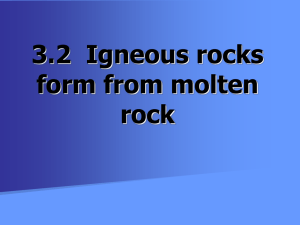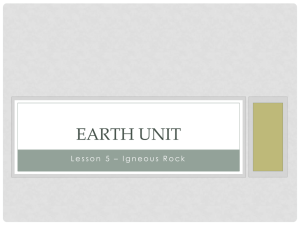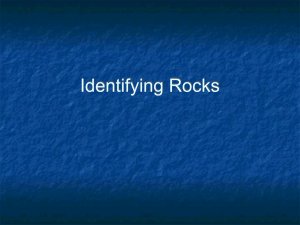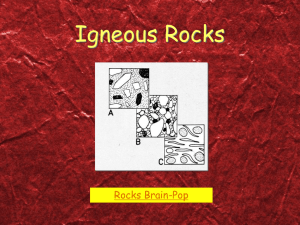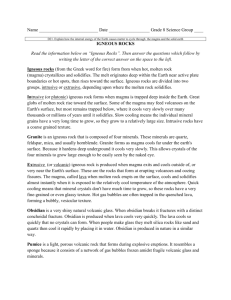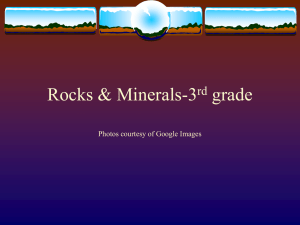Igneous Rocks
advertisement
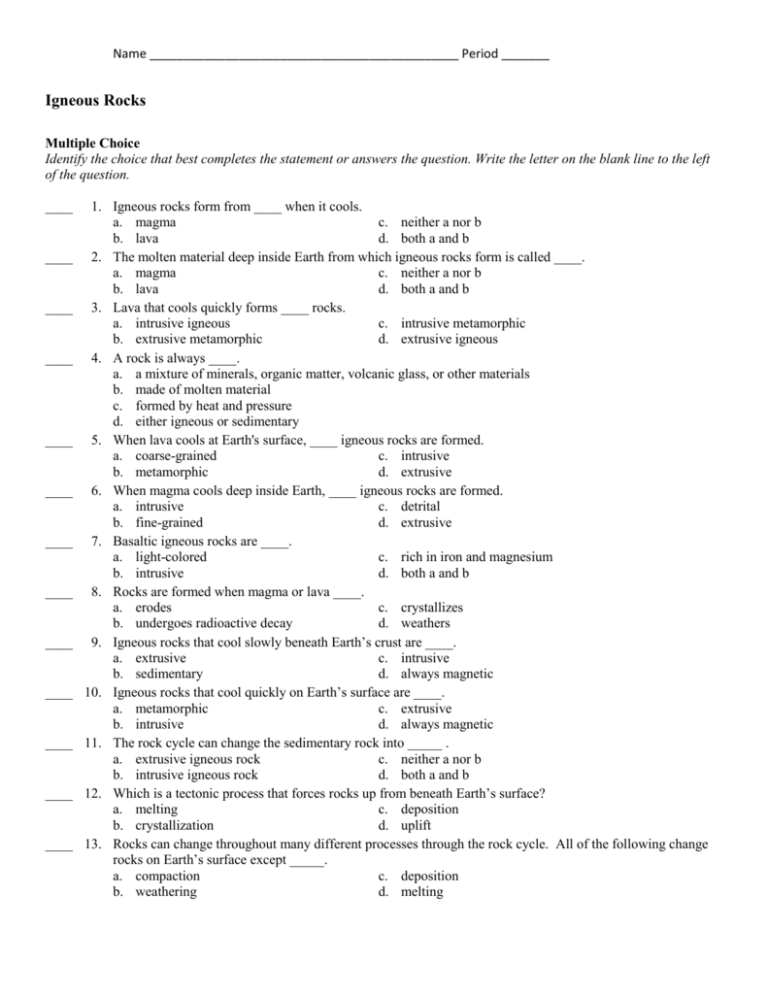
Name _____________________________________________ Period _______ Igneous Rocks Multiple Choice Identify the choice that best completes the statement or answers the question. Write the letter on the blank line to the left of the question. ____ ____ ____ ____ ____ ____ ____ ____ ____ ____ ____ ____ ____ 1. Igneous rocks form from ____ when it cools. a. magma c. neither a nor b b. lava d. both a and b 2. The molten material deep inside Earth from which igneous rocks form is called ____. a. magma c. neither a nor b b. lava d. both a and b 3. Lava that cools quickly forms ____ rocks. a. intrusive igneous c. intrusive metamorphic b. extrusive metamorphic d. extrusive igneous 4. A rock is always ____. a. a mixture of minerals, organic matter, volcanic glass, or other materials b. made of molten material c. formed by heat and pressure d. either igneous or sedimentary 5. When lava cools at Earth's surface, ____ igneous rocks are formed. a. coarse-grained c. intrusive b. metamorphic d. extrusive 6. When magma cools deep inside Earth, ____ igneous rocks are formed. a. intrusive c. detrital b. fine-grained d. extrusive 7. Basaltic igneous rocks are ____. a. light-colored c. rich in iron and magnesium b. intrusive d. both a and b 8. Rocks are formed when magma or lava ____. a. erodes c. crystallizes b. undergoes radioactive decay d. weathers 9. Igneous rocks that cool slowly beneath Earth’s crust are ____. a. extrusive c. intrusive b. sedimentary d. always magnetic 10. Igneous rocks that cool quickly on Earth’s surface are ____. a. metamorphic c. extrusive b. intrusive d. always magnetic 11. The rock cycle can change the sedimentary rock into _____ . a. extrusive igneous rock c. neither a nor b b. intrusive igneous rock d. both a and b 12. Which is a tectonic process that forces rocks up from beneath Earth’s surface? a. melting c. deposition b. crystallization d. uplift 13. Rocks can change throughout many different processes through the rock cycle. All of the following change rocks on Earth’s surface except _____. a. compaction c. deposition b. weathering d. melting Name _____________________________________________ Period _______ ____ 14. The crystals that form in slowly cooled magma produce ____ mineral grains. a. tiny c. fine-grained b. invisible d. large Short Answer (2 points each) Use the diagram to answer the questions. 1. What is the difference between the substance identified as A and the substance identified as B? ________________________________________________________________________________________ ________________________________________________________________________________________ ________________________________________________________________________________________ ________________________________________________________________________________________ _______________________________________________________________________________________ 2. What does the letter C represent and why is it located both within Earth and on Earth’s surface? ________________________________________________________________________________________ ________________________________________________________________________________________ ________________________________________________________________________________________ ________________________________________________________________________________________ ________________________________________________________________________________________ 3. What causes the difference in grain size between intrusive igneous rocks and extrusive igneous rocks? ________________________________________________________________________________________ ________________________________________________________________________________________ ________________________________________________________________________________________ ________________________________________________________________________________________ _____________________________________________________________________________________


